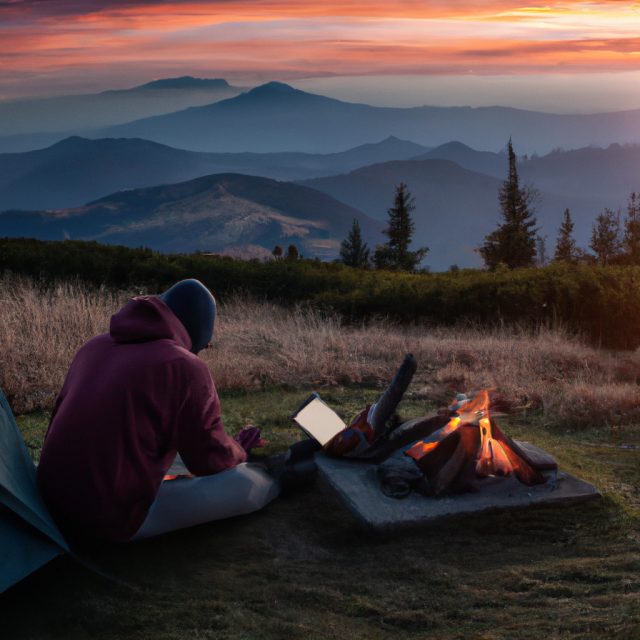In our always-on, hyperconnected world, travel can become just another screen-filled activity rather than a chance to truly escape. Emails, social media notifications, and news alerts vie for our attention even while we’re supposed to be enjoying sunsets or exploring ancient ruins. Enter digital detox travel: a conscious decision to unplug from devices, slow down the pace, and reclaim the restorative power of presence. This guide will walk you through everything you need to know to plan, execute, and savor a trip that refreshes your mind, body, and soul—without constant connectivity.
What Is Digital Detox Travel?
Digital detox travel means stepping away from smartphones, tablets, and laptops for an extended period—ranging from a single afternoon in a national park to an entire week on a remote island. The goal is to minimize digital distractions so you can fully immerse yourself in your surroundings, consciously engage with local culture, and develop greater mindfulness. While you don’t have to go completely off-grid, setting clear boundaries—such as checking messages only once a day—can provide significant mental health benefits.
Benefits of Unplugged Journeys
1. Reduced Stress: Constant notifications trigger our fight-or-flight response. Turning off devices lets your nervous system downshift, lowering cortisol levels. 2. Heightened Presence: Without the urge to photograph every moment for social media, you become a true witness to your experiences, savoring tastes, sights, and conversations in real time. 3. Improved Sleep: Blue light from screens disrupts melatonin production. Unplugging an hour before bedtime leads to deeper, more restorative rest—even on vacation. 4. Stronger Connections: Interactions with travel companions or locals feel more genuine when phones are out of sight. Real conversations flourish when no one is distracted.
Choosing the Right Destination
Opt for locations where connectivity is limited or easily switched off. Remote mountain retreats, rustic beachfront cabins, eco-resorts surrounded by forest, and national parks are all prime candidates for a digital detox. Look for destinations that encourage outdoor activities—hiking, kayaking, stargazing—or provide wellness programs like yoga and meditation. Before booking, read reviews to ensure the spot lives up to its off-grid reputation and that essential amenities (medical care, guided tours) remain accessible.
Planning Your Unplugged Itinerary
Structure is key to avoiding digital backsliding. Draft an itinerary that balances guided activities—such as a sunrise yoga class or a waterfall hike—with ample free time for reflection. Establish digital hours: maybe a 30-minute window each evening to check emails or share a couple of photos with loved ones. Communicate your plan to friends or family beforehand so they know when and how you’ll be reachable in case of emergencies.
Accommodation Tips
Seek lodgings that promote mindful living. Eco-lodges, wellness retreats, and farm stays often advertise “no Wi-Fi in public spaces” or “device-free zones.” If you book a conventional hotel, ask if they offer digital detox packages or rooms stocked with board games, books, and analog entertainment. Small touches—like charging stations outside bedrooms—can discourage late-night scrolling.
Packing Light for a Heavy Experience

Resist the temptation to take every gadget you own. Instead, slim down to one lightweight camera (or rely on your phone camera if you plan minimal sharing), a charger, and a power bank. Bring a journal and pen for notes and sketches. Pack a good book or two and perhaps a deck of cards. The physical act of writing and reading offline reinforces the digital break everyone craves.
Mindful Activities to Try
Meditation & Breathwork: Begin or end each day with guided breathing exercises to center your mind. Forest Bathing: Also called shinrin-yoku, this Japanese practice involves slow, mindful walks through woods to absorb the sights, sounds, and smells of nature./ Local Workshops: Participate in cooking classes, craft workshops, or cultural rituals that demand hands-on presence and teach you about the region’s heritage.
Balancing Connection and Solitude
Some travelers worry about total isolation. Consider a blended approach: choose accommodations with a communal lounge or group activities to foster social interaction. Alternatively, team up with a like-minded friend for company and accountability. In shared digital detoxes, you’ll motivate one another to stay off devices, and you’ll have someone to share insights with at day’s end.
Safety & Emergency Protocols
Unplugging doesn’t mean abandoning caution. Leave your travel itinerary and emergency contacts with someone you trust. Carry a basic first-aid kit, a map, and a compass when hiking. If you venture into areas without cell service, consider renting a satellite communicator for one-touch SOS or location sharing. Always prioritize personal safety over maintaining a strict digital fast.
Eating & Engaging with Local Culture
Digital detox travel heightens your senses, making every flavor more vivid. Seek out family-run eateries or street vendors rather than tourist-trap restaurants. Ask locals for their favorite dishes or hidden cafés. Engage chefs or shop owners in conversation—learn about recipes passed down through generations. These authentic moments stick with you far longer than any Instagram post.
Documenting Memories Without Overdoing It
If you choose to capture a few photographs, set strict limits: maybe 10 shots per day or only during key events like sunrise or a unique cultural ceremony. Store them in a single folder on your device and avoid immediate posting. Back home, you can curate a meaningful photo album rather than an endless social media slideshow.
Transitioning Back Home
Reentry can be jarring. Plan a buffer day at home before returning to work. Continue some detox habits—like a digital-free hour each morning or evening—to preserve the sense of calm you cultivated. Reflect on what you learned about your relationship with technology and consider ongoing strategies: phone-free weekends, notification-free workdays, or monthly unplugged escapes.
Conclusion
Digital detox travel is more than a trend—it’s a path to deeper fulfillment, richer experiences, and better mental health. By intentionally stepping away from screens and embracing mindful exploration, you’ll return from your journey feeling recharged, present, and more connected to yourself and the world around you. Pack your bags, silence your devices, and set off on the most meaningful trip of the year: the one where you rediscover the art of truly being there.
Learn more about: Wellness Travel: A Complete Guide to Revitalize Mind, Body, and Soul














